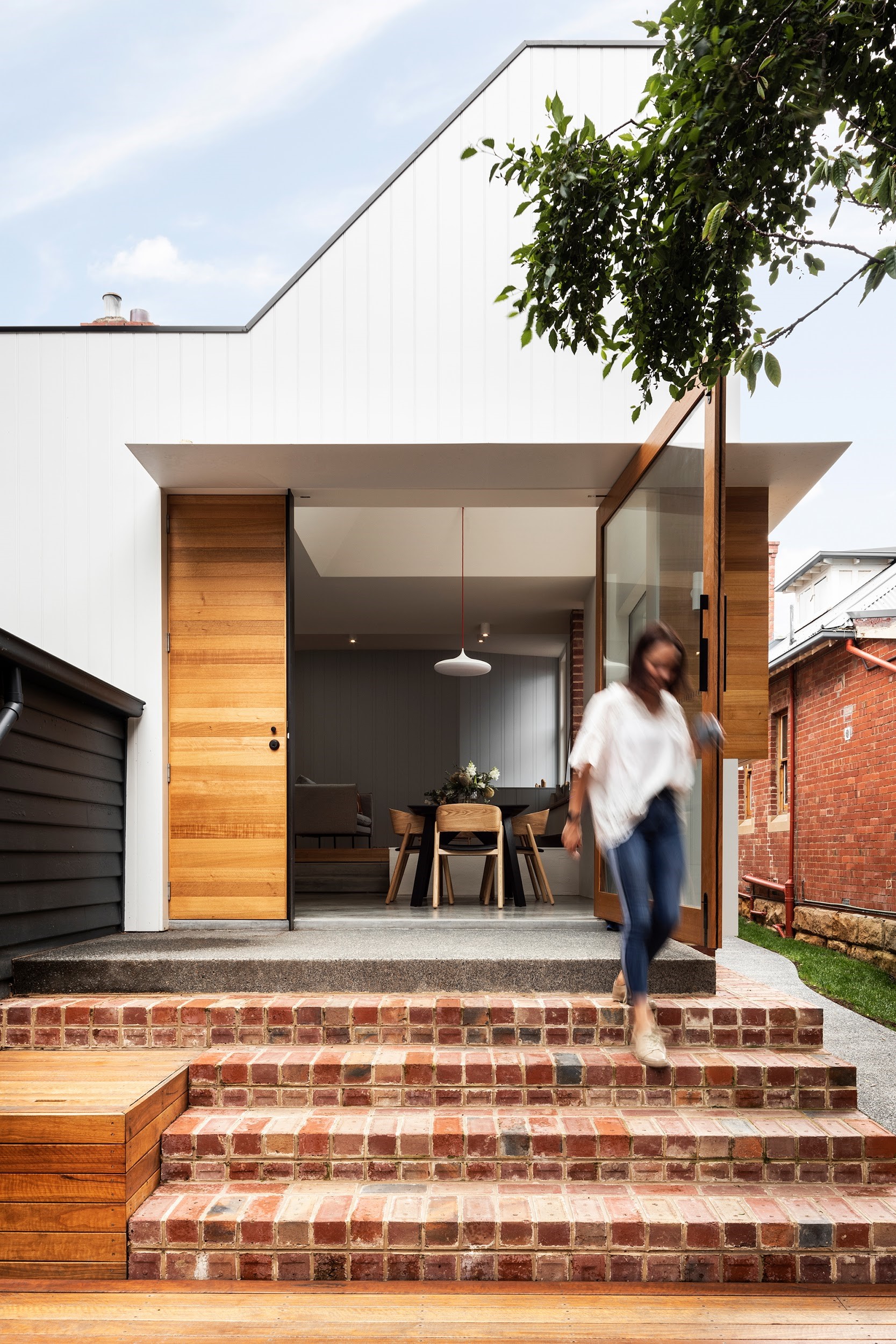
A New Life for a 1920s Hobart Home - The Lansdowne Project by Preston Lane Architects
The Lansdowne Project by Preston Lane Architects plays with volume, geometry and materials to transform a 1920s semi-detached house into a private inward-focused world.
“The underlying aims of the project were to draw light into the heart of a conjoined character home and connect to the new living spaces to the garden” explains Daniel Lane, co-director of Preston Lane Architects, the practice with studios in both Hobart and Melbourne he founded with Nathanael Preston in 2004. While the period details of the original house were charming, the layout was problematic with the bathroom and laundry on the north side blocking the access to the sunlight. A small urban site with nearby neighbours also posed its challenges, with the need for privacy and overlooking regulations restricting the placement of openings.
To achieve the clients’ brief of a light-filled and welcoming home, “a new living-kitchen-dining space ‘scoops’ light in from above through a playful ceiling pop. Additional windows along the right of way to the north also increase access to quality natural light”, Daniel says. Externally, the effect of the raked ceiling is to sympathise with the pitch of the surrounding cottages. Inside, the full extent of this dramatic shift in volume is felt as the ceiling height reaches for the sky, not only improves the home’s access to natural light internally but creating a sense of expansive space within an otherwise modest footprint.
“The underlying aims of the project were to draw light into the heart of a conjoined character home and connect to the new living spaces to the garden”.
While many houses in Hobart are blessed with exceptional views or aspect upon which to focus the outlook, the Lansdowne Project is set within a reasonably small site surrounded by built environment. The raked ceiling beckons toward the outdoors and creates a strong connection with the garden, yet the focus of the home is inward rather than toward an external aspect. Daniel explains that in the absence of an outer focal point, “we created an internal space where the light would dance and wash the walls to provide more ambience within the home”.
Custom aluminium ‘fins’ are designed to give the inhabitants the ability to mediate light and shadow while maintaining privacy – here, light is essential to the design decisions yet is simultaneously carefully controlled. In contrast to the light-filled open-plan living space, the more private areas such as the ensuite are dark and rather moody, while the main bathroom finds lightness in the materials, rather than in the presence of natural light.
Externally, the effect of the raked ceiling is to sympathise with the pitch of the surrounding cottages.
“Materiality is very important in our work”, reflects Daniel. A restrained, neutral palette of white, concrete and Tasmanian oak harmonises with the texture of the brickwork walls that cradle the new work, and “simple expressed joinery pulls to enable playful light patterns to wash across the walls, providing life within”, he continues. Timber is especially important in Preston Lane’s work, often using it at the human level, in locations where it interacts with the occupants of the building. “The tectonic qualities provide warmth to a space”, Daniel says.
Materiality is also responsible for demarcating the line between new and old, which is visible through the retention of exposed brickwork walls, roof lights, glazing and flooring. Preston Lane repurposed bricks from demolished walls to be used as the extension base and for the external stairs that draw you from the dining space down onto a deck platform and into the garden beyond. Meanwhile, material and geometry unite in the form of a striking new curved pale blue wall that hides a new amenities area while creating a feature backdrop in the living space.
“Materiality is very important in our work”.
“We like to play with volume, light and materials in a home to assist in the experience of the place”, Daniel says, and the Lansdowne Project is a testament to this approach. Within a constricted site, Preston Lane Architects have created a home that is at once playful and timeless, an inward-focused architecture with light at its heart.




































